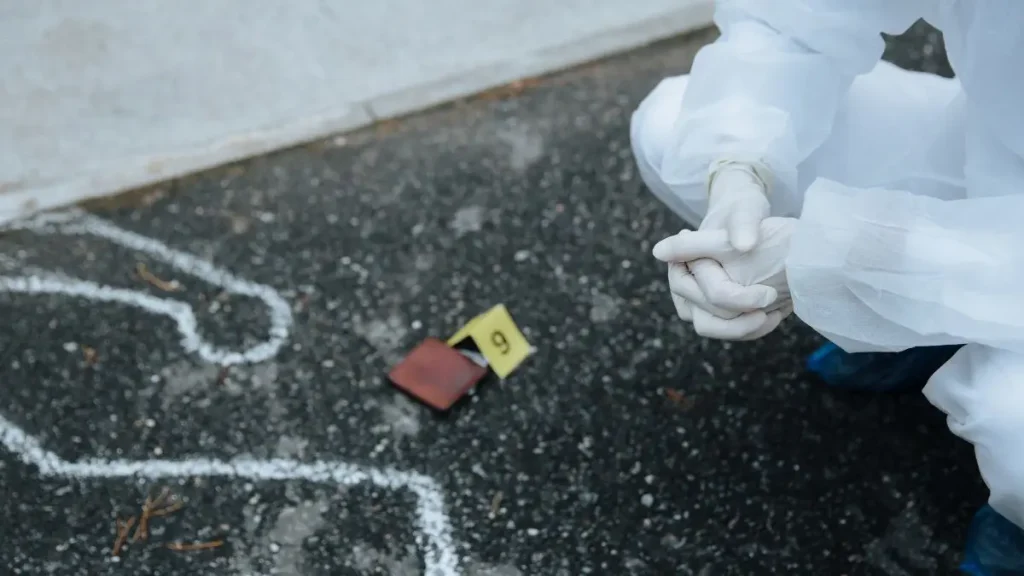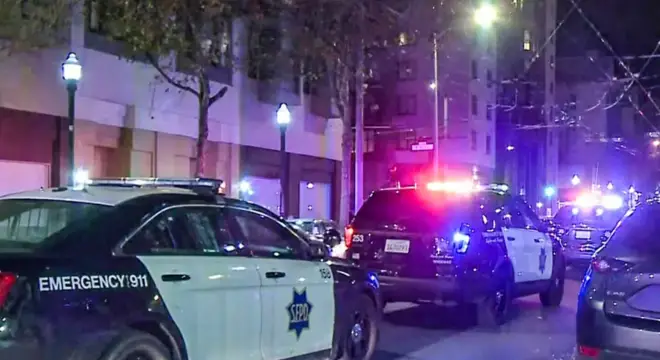Woman Found Dead in Oklahoma City House Fire Now Investigated as Homicide
I’ve seen house fires take lives. But this one… this one feels heavier.
Because when 45-year-old Kellie Slaughter was pulled from the flames inside her southwest Oklahoma City home last Thursday morning, it didn’t end with grief—it opened with suspicion.
At first, it looked like just another tragic fire. Early morning blaze, smoke pouring from the garage, neighbors waking up to sirens. Kellie was found inside and taken to the hospital. But what wasn’t visible in the flames… was what killed her.
Days later, police confirmed what many feared: this wasn’t an accident. It was murder.
And suddenly, this quiet cul-de-sac on Southwest 76th Street became a crime scene.
What really happened that morning? Why was Kellie in danger long before the fire even started?
And could someone have saved her?
We’re going to dig into all of that. But for now, let me ask you—
What would you do if a loved one told you they were afraid of someone inside their own home? Share your thoughts in the comments. Let’s talk about the warning signs we often miss.
The Night Everything Changed: Flames, Fear, and a Life Lost
If you’ve ever woken up to sirens outside your window, you know how fast panic can spread. That’s what neighbors felt around 7 a.m. last Thursday when smoke started pouring out of a home near S.W. 76th and Douglas in Oklahoma City.
At first glance, it looked like a terrible accident. A fire starting in the garage, spreading fast through the house. But when fire crews found Kellie Slaughter inside, unconscious, everything shifted. She was rushed to the hospital—but didn’t survive.
I read the police update on Free Press OKC twice. They weren’t just treating this as a fire. They were treating it as a homicide.
Investigators noticed something that didn’t fit the usual pattern of fire-related deaths. They didn’t say much at first—but they made it clear: something about Kellie’s death was off. And they were no longer looking for smoke damage—they were looking for a killer.
A similar case unfolded recently in North Carolina, where a man was found dead inside a burning home in Clayton—and police were quick to investigate deeper once something didn’t add up.
Who Was Kellie Slaughter? And What Was She Going Through?

When I started reading more about Kellie, it hurt to see how real and close this story felt.
She wasn’t just a name in a police report. Kellie was a daughter, a neighbor, a part of the OKC community. Friends online described her as kind, full of energy, someone who made you feel seen. She worked with the Oklahoma Safety Council. She hosted community events. She mentored people. She was trying to rebuild her life.
But behind the scenes, Kellie was scared.
She had just filed for divorce two days before the fire. She also filed a protective order against her husband. And when someone does that, it’s usually not out of nowhere. It’s a sign they’ve been pushed past the breaking point.
You ever hear someone say, “She was trying to leave”? That phrase hits different when you realize how many women are most in danger right when they try to walk away.
Have you or someone close to you ever faced a similar moment of fear or helplessness? Drop your thoughts in the comments—we need to talk more openly about how these patterns start.
Inside a Toxic Relationship: The Court Documents That Tell the Real Story
Here’s where the pain turns into a pattern—one I’ve sadly seen before.
She accused him of threatening her, damaging her car, and making her fear for her life.
He responded with his own filing, claiming she provoked him, that she pulled a gun. This kind of back-and-forth might seem confusing on paper. But if you’ve ever lived close to someone in a violent relationship, you know it’s rarely simple.
What’s clear is this: there were three police calls to their home since March. And the last one? Just two days before Kellie died.
Think about that.
She had changed the locks. She had legal counsel. She was making every move to protect herself. And still, something—or someone—found a way to end it all.
If you’ve ever known someone in a situation like this, you know how hard it is to leave. You also know how loud the silence is when no one steps in.
Lately, more people are turning to real-time safety updates shared directly through WhatsApp alerts. Stories like Kellie’s often surface there before they hit the news. It’s worth staying informed.
When a Fire Becomes a Crime Scene
By now you’re probably wondering—how do police know this was murder and not just a deadly fire?
The truth is, it wasn’t the fire that killed Kellie. At least, that’s what they believe now. According to KFOR, the medical examiner found injuries that didn’t match a fire-related death.
That means Kellie may have been dead—or dying—before the fire even began.
This changes everything. Because now, investigators aren’t just looking into a fire. They’re looking into how the fire may have been used to cover up a crime.
And it’s not the first time something like this has happened. Fires can be staged. Evidence can be destroyed. But you can’t burn away everything. Not when people are paying attention.
If this makes your stomach turn—it should. It means someone may have planned this. And that should scare all of us into listening harder when someone says, “I don’t feel safe.”
Unfortunately, fatal fires like this aren’t rare—just last month, a person was found dead in a Maine home under similar tragic circumstances, leaving the community shaken and searching for answers.
The Warning Signs: When Domestic Trouble Turns Deadly

You hear it too often—“She was just about to leave.”
It’s not a coincidence. For many women, leaving is the most dangerous moment in an abusive relationship. The moment you file for divorce, change the locks, or ask for help—it threatens control. And people who need control don’t give it up quietly.
Kellie’s story is heartbreaking, but it’s not rare. According to the CDC, more than half of female homicide victims in the U.S. are killed by a current or former intimate partner. That’s not just a statistic—it’s a warning we can’t ignore.
Here’s what I want you to take from this:
- If someone tells you they’re afraid of their partner, believe them the first time.
- If you notice a friend withdrawing, hiding injuries, or making excuses—check in, gently but persistently.
- If you’re in a toxic situation yourself, please know: you’re not being dramatic, you’re being smart.
There are people who will listen. And there are safe exits—though I know they’re not always easy or clear.
Call it what it is: control, manipulation, threats, isolation—it’s not “relationship problems.” It’s abuse. And no one should have to die just to prove they were right to be scared.
It’s not just fire—sometimes, homes turn into violent battlegrounds in completely different ways, like when a 14-year-old was shot during a burglary in Los Angeles.
In other cases, like a massive fire in Kennewick, Washington, the focus begins on property loss or rescue—but shifts quickly when signs point to something more than just flames.
Where This Story Goes From Here
We may never know every detail of what happened inside that house—but we know enough to ask the right questions.
Kellie did everything you’re told to do when you’re afraid: she asked for help, she took legal steps, she tried to leave. And still, she didn’t make it out.
If her story hit a nerve with you—good. Let it. Because the next woman in this situation might still have time.
Want to explore more stories that uncover what really happens behind closed doors? Visit our Home Security section for more in-depth reporting and updates.
Disclaimer: This article covers real events involving domestic violence and homicide. Details are based on publicly available information at the time of writing.


